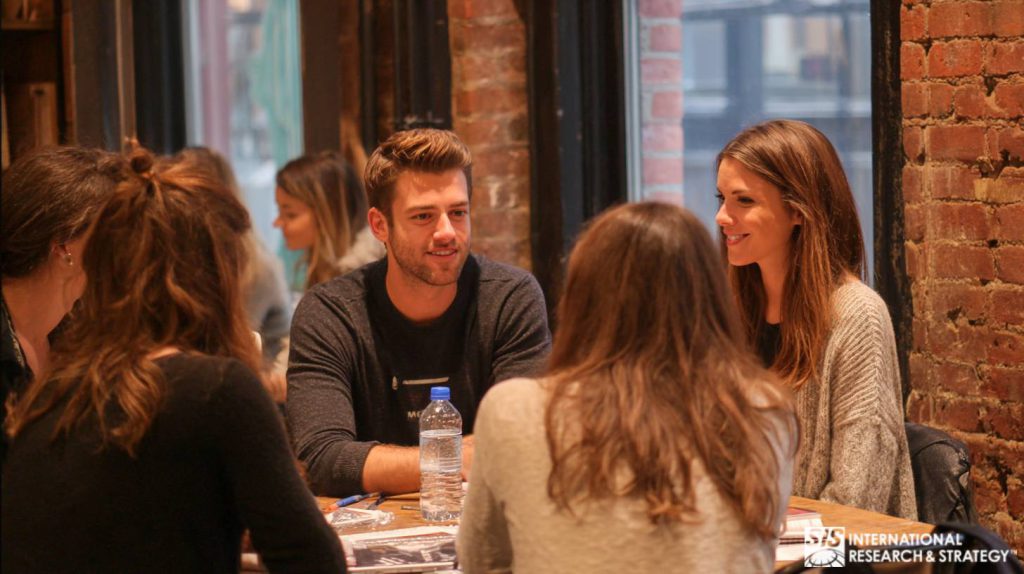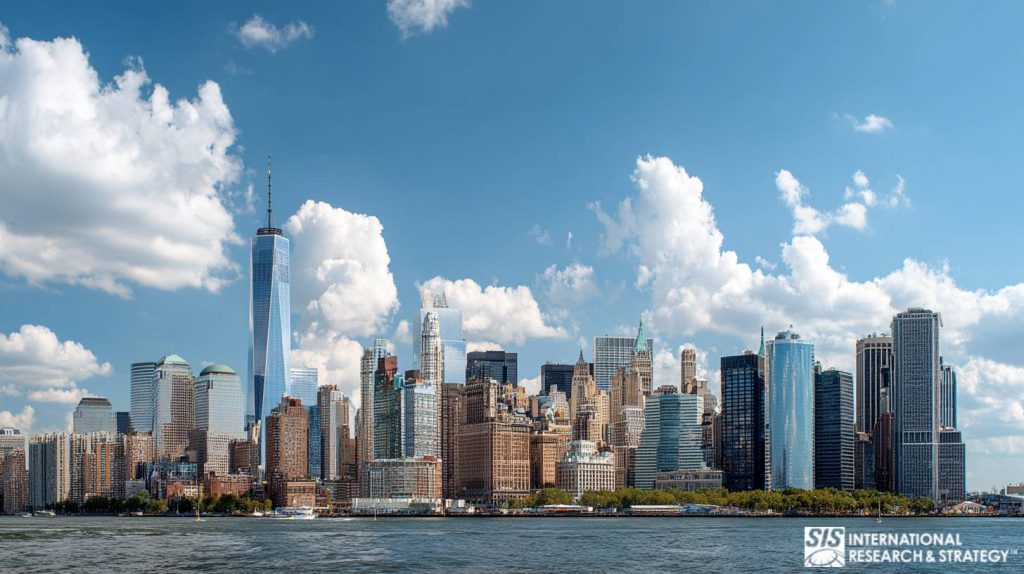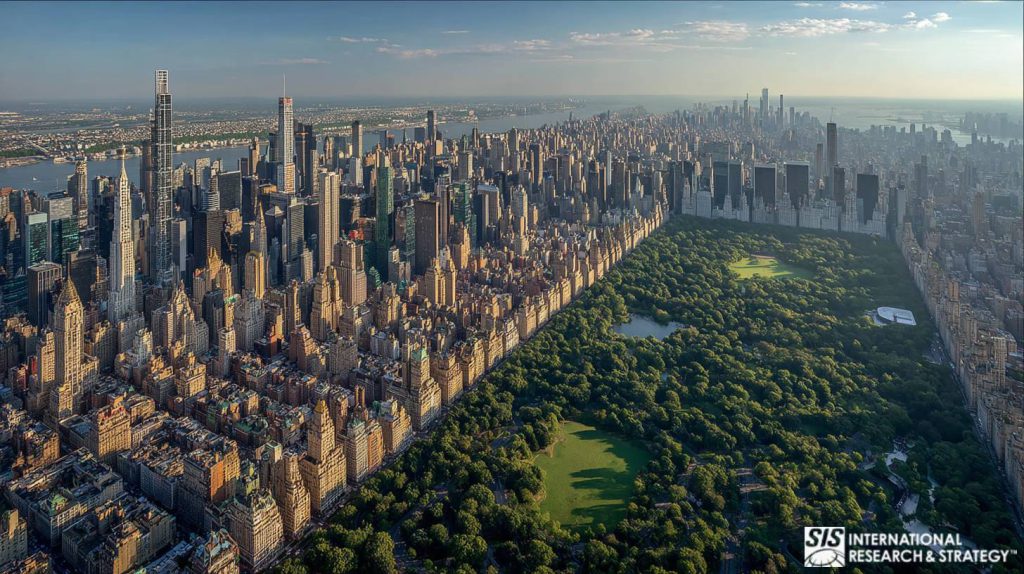Qualitative Research in New York

Your marketing is failing in New York, and nobody has the guts to tell you why.
It’s not your budget. It’s not even your product… It’s because you don’t understand New Yorkers at a bone-deep level. And you never will until you tap into the hidden power of qualitative research in New York.
The brands crushing it in Manhattan, Brooklyn, and beyond aren’t just throwing money at problems. They’re diving into the city’s psyche – street by street, neighborhood by neighborhood.
Table of Contents
✅ Listen to this PODCAST EPISODE here:
What Qualitative Research in New York Actually Is (Hint: Not What You Think)
Real qualitative research in New York is urban anthropology on steroids. It’s detective work that uncovers not just what New Yorkers do, but why they wake up at 5 AM to stand in line for a croissant when there’s a delicious bakery next door with no line.
You think you know why your perfect product bombed in Williamsburg? You don’t.
The hard truth: New York is a living organism that metabolizes brands and spits out the inauthentic ones without mercy.
Why Most Companies Get This Catastrophically Wrong

New York isn’t just another market to check off – it’s the crystal ball for consumer behavior across America.
That weird trend in SoHo today? It’ll hit Chicago in six months and the suburbs six months after that.
Within a single subway ride, you can access more diverse perspectives than entire states offer. Think about that leverage. This insane concentration makes qualitative research in New York valuable and the highest ROI research you can conduct.
And yet.
Most brands squander this opportunity with generic approaches that work in Anytown but fail spectacularly here.
Table 1. Qualitative Research in New York – Strategic Business Intelligence
| Research Domain | Strategic Intelligence | NYC Data | Authority Source |
|---|---|---|---|
| 🔬 QUALITATIVE METHODOLOGY ECOSYSTEM | |||
| Primary Methods | Core Qualitative Research Techniques | 民族志 深度访谈 焦点小组 | NCBI Research Methods |
| 民族志研究 | Cultural Immersion Research Duration | Several months for comprehensive insights | Researcher Life |
| Interview Formats | Structured vs Unstructured Approaches | Flexible adaptation to participant responses | NCBI Methodology Guide |
| 数字化集成 | Online vs In-Person Research Effectiveness | Hybrid approaches maximize authenticity | Lyssna Research Types |
| 数据采集 | Multiple Source Triangulation | 采访 + Observation + Documents | Delve Ethnography Guide |
| 🏙️ NYC MARKET RESEARCH INDUSTRY DYNAMICS | |||
| Employment Scale | Market Research Analysts & Specialists (2020) | 76,650 professionals employed | DesignRush NYC Analysis |
| Industry Leadership | NYC Ranking in US Market Research | #1 metropolitan area for employment | DesignRush Industry Report |
| Economic Impact | Manhattan GDP Contribution (2023) | $939 billion (73% of $1.286T total) | NYC Economic Data |
| Financial Sector | Securities Industry Employment | 181,300 jobs $398,600 avg salary | NYC Economic Statistics |
| Office Market | Manhattan Commercial Office Space | 500+ million sq ft Largest US market | NYC Real Estate Data |
| 💰 ROI & BUSINESS IMPACT METRICS | |||
| ROI Expectations | Management Comfort Level for Research ROI | 30% annual return on soft investments | NBRI ROI Analysis |
| Marketing ROI Tracking | Companies Calculating Marketing Campaign ROI | 26% increased from 18% (2007) | B2B International |
| ROI Assessment | Companies Using ROI Metrics for Marketing | 53% of marketers utilize ROI metrics | FlexMR Research |
| Pharmaceutical Success | Mixed-Method Research Success Rate | 37% higher product launch success | Healthcare ROI Statistics |
| 🗺️ BOROUGH-SPECIFIC RESEARCH INTELLIGENCE | |||
| Manhattan Business | Midtown Central Business District | 400 million sq ft World’s largest | NYC Economic Data |
| Financial Professionals | Securities Industry Geographic Distribution | 60% live in NYC, 32% immigrants | Financial Sector Demographics |
| Education Levels | Financial Workers Educational Attainment | 51% bachelor’s, 39% advanced degrees | Workforce Education Data |
| Advertising Hub | Madison Avenue Global Leadership | Top global center for advertising industry | NYC Industry Analysis |
| Fashion Industry | NYC Fashion Employment & Wages | 180,000 employees with $11B annual wages | Fashion Industry Data |
| ⚡ RESEARCH QUALITY & STRATEGIC CHALLENGES | |||
| Participant Authenticity | NYC Professional Research Participant Risk | High sophistication requires advanced screening | Research Quality Issues |
| Cultural Complexity | Simultaneous Multi-Cultural Analysis | Dozens of perspectives per study | Angelfish Research |
| Incentive Structures | High Cost of Living Impact on Compensation | Economic pressure paradox affects participation | Compensation Challenges |
| Attention Constraints | NYC Pace Impact on Research Quality | Mental overextension affects focus | Dovetail Research Analysis |
| Geographic Logistics | Transportation & Accessibility Challenges | Complex systems affect attendance reliability | Urban Research Logistics |
| 🚀 TECHNOLOGY & FUTURE TRENDS | |||
| Synthetic Data | AI-Generated Research Respondents Satisfaction | 87% positive feedback from research teams | Greenbook 2025 Trends |
| ROI Pressure | Demand for Research ROI Demonstration | Essential skill for 2025 research teams | Greenbook Industry Analysis |
| Mixed-Methods | Qualitative + Quantitative Integration | Increased demand for complex product research | 2025 Research Trends |
| Ethnographic Evolution | Digital Ethnography Growth | Remote observation capabilities expanding | Digital Ethnography |
| AI Enhancement | AI-Powered Pattern Recognition | Human insight augmentation not replacement | AI Research Integration |
| ⏰ STRATEGIC TIMING & IMPLEMENTATION | |||
| Optimal Research | Product Launch Timing | 6-9 months before launch date | Utah Valley Research Guide |
| Ethnographic Duration | Cultural Analysis Time Requirements | Several hours per participant minimum | Ethnographic Best Practices |
| 样本大小 | Effective Qualitative Research Scale | 15-30 interviews for comprehensive insights | Indeed Research Methods |
| Focus Group Scale | Optimal Group Discussion Size | 8-12 participants per group session | Focus Group Standards |
| Business Application | When NOT to Conduct Qualitative Research | Limited action capacity or predetermined outcomes | Research Methodology Guide |
The Methods That Actually Work
✔️ Street-Level Reality Checks
You haven’t done qualitative research in New York until you’ve shadowed someone running late for a meeting during a subway delay.
One food delivery service was baffled why their “convenience” app wasn’t connecting with Manhattan professionals. Their breakthrough came from qualitative research in New York that involved walking with customers during lunch rushes.
The revelation? Their app required 14 seconds longer to complete an order than competitors. In any other market, those 14 seconds were irrelevant. In New York? Absolute death sentence.
✔️ Digital Tribal Mapping
New Yorkers live in digital tribes that often transcend physical neighborhoods. These invisible communities hold the keys to market entry that most brands never discover.
✔️ Cultural Code-Switching
Each New York micro-community operates by unwritten rules that outsiders violate at their peril.
The blunt messaging that kills in Hell’s Kitchen will trigger eye-rolls in Park Slope. The visual identity that feels authentic in Washington Heights comes off as try-hard in Tribeca.
在 SIS 国际, researchers decode these invisible boundaries through immersive qualitative research in New York. They’ve mapped the cultural tripwires determining whether your brand becomes a neighborhood darling or an ignored intruder.
The Borough-by-Borough Battlefield

✔️ Manhattan: Where Money Talks But Status Whispers
The mistake? Thinking of Manhattan as one market.
The Upper East and Lower East Side might as well be different planets. Effective qualitative research in New York parses these distinctions with surgical precision.
✔️ Brooklyn: The Neighborhood That Eats Inauthentic Brands Alive
You won’t find trends copied in Brooklyn. Being part of the community in Bushwick and Greenpoint allows researchers to spot changes in preferences before they are seen in traditional media.
✔️ Queens: The Global Village You’re Completely Ignoring
Most brands make a catastrophic error: they treat Queens as an afterthought when it’s actually America’s most linguistically diverse area. From Jackson Heights to Flushing, specialized moderators conduct qualitative research across dozens of languages and cultural contexts in New York.
The Unspoken Rules That Separate Winners From Losers
✔️ Timing Trap
Scheduling qualitative research in New York without understanding the city’s rhythms is like trying to surf when the tide is out.
Summer Fridays? Your affluent participants will ghost you for the Hamptons by noon on Thursday. The week of fashion shows? Good luck getting anyone in related industries to focus on your product.
The post-Labor Day period brings a focused energy that makes it gold for B2B qualitative research in New York. Tuesday mornings yield better executive participation than any other time slot – a fact that has transformed outcomes for clients who previously wondered why they couldn’t get decision-makers to engage.
✔️ The Recruitment Revolution
Conventional demographics are dead in New York. Full stop.
A 28-year-old in Astoria and a 28-year-old in Financial District might statistically look identical but make radically different consumption choices. Psychographics and lifestyle markers predict behavior with 3x more accuracy.
“You need to know which subway lines someone takes, which coffee shops they Instagram, and whether they’d rather be caught dead than shopping at certain stores,” explains a veteran insights professional. This approach to qualitative research in New York yields participants who represent genuine consumption patterns, not just demographic checkboxes.
✔️ Location Psychology
What is the biggest mistake in qualitative research in New York? Choosing facilities based on convenience rather than psychological impact.
Traditional Midtown focus group rooms work for corporate audiences but cause younger participants to check out before they’ve even sat down mentally. Creative professionals open up more in converted warehouse spaces, while luxury consumers respond better in hotel meeting rooms or private club spaces.
Figure 1. Qualitative Research ROI & Strategic Business Impact
来源: Healthcare ROI Analysis & B2B International
Why it is Beneficial to Businesses

Qualitative research in New York uncovers narratives and predicts future events
Qualitative research in New York goes beyond offering assistance to businesses. It has the potential to psychologically paralyze competitors who rely on shallow data and demographic extrapolations.
Advantage #1: Cultural Psychology Decoding
New York’s 8+ million residents present all the psychological frameworks that drive global consumer behavior. Qualitative research in New York captures the cultural programming that leads to purchases, brand loyalty, and even confident lifestyle choices, which quantitative data fails to explain.
Advantage #2: Trend Prediction Superpowers
With qualitative research in New York, businesses are equipped to capture emerging cultural shifts. They gain insight into current consumers and the coming wave of American consumer behavior long before competitors know it exists.
Advantage #3: Economic Reality Intelligence
New York consumers are often seen as a window for all Americans as they forecast how everyone will behave when the economy tightens. Qualitative research in New York reveals recessionary survival tactics, cost-cutting mechanisms, and purchasing behavior that define the new normal during economic downturns.
Advantage #4: Innovation Insight Generation
Culturally rooted dissatisfaction and lifestyle gaps identified by qualitative research in New York represent billions of dollars in overlooked innovation. Urban consumers’ living strategies are optimized for a fast-paced life, often exposing market gaps hidden from suburban-centered research.
Advantage #5: Competitive Intelligence Networks
Social connections and cultural leadership drive New York consumers’ purchasing power, allowing them to forecast and steer buying behavior at the national level. These dynamics make qualitative research in New York invaluable in identifying emerging competitive challenges and market changes.
The ultimate advantage? With qualitative research in New York, businesses become market leaders who proactively shape trends instead of responding to consumer behavior. Such businesses transform from reactive followers to proactive visionaries triggering worldwide evolution.
Figure 2. Qualitative Research Methods – NYC Market Effectiveness
来源: NCBI Research Methods & Healthcare ROI Analysis
When to Conduct Qualitative Research in New York
Investing in poorly scheduled qualitative research in New York can uncover dangerously irrelevant insights and strategically damaging for competitive positioning.
✔️Before Major Product Launches
Conduct qualitative research in New York six to nine months before the launch date to capture the cultural psychology surrounding product acceptance. While New Yorkers are often unforgiving towards flawed products, they reward those that solve real urban issues.
✔️ Addressing Societal Changes
Cultural shifts are usually at the root of strange or paradoxical national consumer behavior patterns. Understanding these shifts often requires qualitative research in New York. Consumers in New York experience cultural change first, placing them at the forefront of societal change.
✔️ Following Economic Stability
Changes in U.S. economic conditions often call for qualitative research in New York. Insights gained during economically stable times provide useful predictions for approaching recessions, especially on spending and purchasing. Urban populations exhibit accelerated adaptation to stress much more than rural populations. These adaptations often provide an economic lifeline, becoming widely accepted as the norm.
✔️ When Competitors Wear The Psychic Hat
If you find that a rival has a better anticipation of market shifts than you do, it is likely that the understanding of consumer psychology on their side far exceeds yours. Qualitative research in New York relates to better understanding the competition and reveals priceless psychological paradigms that give an edge through a better grasp of consumers.
✔️ Preceding Global Market Strategies
New York’s rich and diverse culture helps you avoid costly international expansion mistakes. Using qualitative research in New York allows simultaneously testing of cultural messages, product positioning, and market entry strategies on various cultural views.
✔️ During Product Innovation
Investing in qualitative research in New York during the early phases of product innovation helps understand whether the intended needs are genuine or just the offspring of industry assumptions, competing feature mimicry, or engineering.
✔️ Resolving the Conflict Between Market Data and Intuition
In case a strategic assumption or a certain part of the business conflicts with the intuition of the business and quantitative data, qualitative research in New York invariably addresses the psychological dimensions that inform intuition decision-making on data contradictions.
Never Conduct When:
- Leadership is not able or ready to act upon suggestions contrary to assumptions.
- Preserving budget caps prevents acting on insights.
- Strategy modification opportunities become impossible due to time constraints.
- Timeline driven, milestone achievement focuses excludes strategic re-definition.
- Decision validation motivation depends on pre-determined configurations.
机会

Qualitative research in New York facilitates flowing opportunities beyond the conventional domains of 市场调查 to business reengineering, which can reshape entire industries.
Possibility #1: Culture Creation Trends
Allows corporations to exploit core weaknesses of competitors by outmanoeuvring them and anticipating their moves.
Opportunity #2: Leadership in Economic Adaptation
Qualitative research in New York reveals effective strategies for economic triage that proactively anticipate adaptive financial behaviors in all consumers..
Opportunity #3: Access to Innovation Ecosystems
New York’s network of entrepreneurs, creatives, and industry leaders facilitates accessible qualitative research and innovative insights that can transform sectors.
Opportunity #4: Global Cultural Intelligence
A qualitative researcher in New York can obtain cultural insights that guide expansion plans for any country, eliminating the need for costly global research. The city’s diversity allows for understanding multiple international markets at once.
Opportunity #5: Luxury Market Psychology
New York offers qualitative research opportunities for understanding the psychology of luxury consumers due to the disproportionate number of high-net-worth individuals living there, which impacts pricing strategies for the luxury segment globally.
挑战
The issues infiltrating qualitative research in New York add additional layers that jeopardize not only the validity of the research but can completely nullify the expensive insights and fill them with polluted data.
🔹Challenge #1: Participant Authenticity Crisis
The highly educated and research-savvy population in New York creates challenges related to authenticity that are not found elsewhere. How does one sift through honest sentiments and crafted opinions meant to impress or fulfill expectations?
🔹Challenge #2: Cultural Complexity Overload
New York’s diversity poses an issue where a single study needs to tackle dozens of cultural perspectives, communication styles, value systems, and ideas that impact response authenticity across multiple participants.
🔹Challenge #3: Economic Pressure Paradoxes
The high cost of living in New York creates paradoxes: Traditional payment structures either greatly disincentivize high-earning professionals or dramatically incentivize participation among lower-income groups.
🔹Challenge #4: Pace and Attention Constraints
As a result of New York’s hectic lifestyle, participants face attention challenges and mental over-extension like urban drowning, putting them to mental multitasking, time-reporting burdens, and mental working memory overload as not to sustain full cognitive focus on research questions.
🔹Challenge #5: Social Desirability Amplification
Because of New York’s heightened social awareness and political consciousness, it is also prone to greater social desirability bias, whereby participants supply answers they believe to be more culturally acceptable rather than personally authentic.
🔹Challenge #6: Geographic Logistics Nightmares
New York’s intricate transportation systems, parking difficulties, and neighborhood access create geographic or spatial obstacles that influence participant recruitment, the feasibility of the research’s location, and the reliability of attendance at the sessions.
🔹Challenge #7: Professional Research Participant Networks
The concentration of the research industry in New York gives rise to professional participant networks appearing in multiple studies across competing firms, which may lead to contamination via respondent reactions, learned responses, or research experience.
Meeting the Challenge
For every challenge, top providers of qualitative research in New York create specialized capabilities that transform these challenges into competitive advantages:
- Advanced participant verification systems guarantee authenticity
- Cultural competence training specifically for moderators and researchers
- Sophisticated compensation strategies that motivate genuine participation
- Flexible research methodologies tailored to urban lifestyle time constraints
- Privacy protection protocols surpass participant expectations
The Future Is Already Happening

Hybrid Methodologies: The New Normal
There is now no difference between digital and physical research. New York’s current qualitative research approach allows us to see the world as people really experience it every day.
Imagine that some participants take videos of their shopping trips, share what they learn at meetings, and then develop and refine new ideas online.
An SIS International analysis notes that “the most powerful insights emerge at the collision point of what people say versus what they actually do. “ This methodological fusion has transformed qualitative research in New York from episodic events into ongoing discovery systems.
AI-Improved Human Ability
AI has made it much easier to gain helpful information from qualitative data. The tools help researchers in New York uncover patterns in very large amounts of data which by human analysis would take much longer.
The mistake? Many people assume AI can do the work humans once did. There are cultural norms that make qualitative research here special and experts are needed to fully understand them.
The Polarity Field has a Truth Serum as well.
What people say versus what their movements and expressions suggest is now an important area of research in New York.
Using eye-tracking, we found out which aspects of the packaging really stand out against New York’s constant visual buzz. The devices measure changes in participants that they are not aware of themselves.
Inside the Qualitative Research in New York Toolbox
Key Insights You Can’t Afford to Miss
✅ New York functions as America’s trend incubator – get it right here, and you’ll be ahead of national curves by months.
✅ Each borough offers distinct consumer segments that respond to radically different approaches.
✅ Each borough offers distinct consumer segments that respond to radically different approaches.
✅ Each borough offers distinct consumer segments that respond to radically different approaches.
✅ Digital ethnography has revolutionized traditional methodologies by accessing conversations brands were never invited to join.
✅ The post-pandemic landscape demands research approaches seamlessly bridging physical and digital behaviors.
✅ Cultural fluency across neighborhoods isn’t a nice-to-have – it’s the difference between acceptance and rejection.
✅ The most valuable insights emerge from methodologies that capture both what people say and what they actually do.
✅ Research timing and location choices profoundly impact the quality of insights uncovered.
Why SIS International Dominates Qualitative Research in New York
在 SIS 国际, we’ve built our reputation by breaking conventional research rules and delivering insights others miss. Here’s why brands with no margin for error trust us:
🔹TAILORED CUSTOM APPROACH: One-size-fits-all approaches create and provide one-size-fits-all insights. We develop research methods predefined by your specific business needs. Our tailor-made consulting approach provides precise results, based on clear problem statements and objectives, ensuring you receive precisely what you need.
🔹40+ YEARS OF EXPERIENCE: We have undergone market cycles, consumer shifts, and methodological evolutions that inform our current approaches. Unlike newer agencies still struggling to find their footing, seasoned agencies can only provide this knowledge.
🔹RECRUITMENT FROM OUR GLOBAL DATABASES: Our qualitative databases of participants consist of screened New Yorkers from all demographic groups. We can quickly assemble the right respondents with diverse background needed for any research question.
🔹PROJECTS GET DONE FAST: We know how businesses value time. We conduct qualitative research in New York expediently without sacrificing depth or quality.
🔹AFFORDABLE RESEARCH: Business efficiency enables us to provide sophisticated research at competitive prices. We do not overspend on research components irrelevant to the business problem.
🔹CULTURAL FLUENCY: Our staff comprises researchers from diverse ethnicities and cultures, who appreciate the community dynamics. Such ethnic understanding is important in a multicultural place like New York.
🔹ACTIONABLE DELIVERABLES: We interpret qualitative data to extract raw insights and prepare them for implementation. Our reports focus on corporate matters rather than academic questions, allowing the data to inform action directly.
常见问题解答
How does qualitative research differ from quantitative research in practice?
Qualitative research explores the “why” behind behavior through methods that quantitative approaches can’t touch. While surveys tell you 68% of New Yorkers disliked your packaging, qualitative research in New York reveals it reminded them of a discount brand from their childhood – an association no survey would ever uncover.
What sample sizes actually deliver results?
Forget what textbooks taught you. Effective qualitative research in New York typically involves smaller, strategically selected groups than you’d expect. For focus groups, this means 4-6 sessions, each with 6-8 participants. For in-depth interviews, 15-30 participants often reveal everything you need to know.
How long until I get actionable insights?
Timelines vary by methodology, but most follow a predictable rhythm. Recruitment typically requires 1-2 weeks, fieldwork another 1-2 weeks, and analysis about 1-2 weeks. Accelerated options exist for urgent business needs.
The city’s density actually accelerates many processes compared to suburban or rural markets – another hidden advantage of conducting qualitative research in New York.
How do I integrate qualitative insights with existing data?
Companies that gain a competitive advantage utilize qualitative research at strategic points in their development cycle. Deploy it early to identify opportunities and refine concepts, then validate findings with quantitative methods before full implementation.
The biggest mistake? Treating qualitative research as a one-time event rather than building ongoing learning systems that continuously deepen customer understanding.
Which technological innovations actually deliver better insights?
Cut through the hype. Mobile ethnography apps that capture in-the-moment experiences yield more authentic insights than retrospective discussions. Video analytics identifying emotional responses during interviews reveal truths participants never consciously express.
Is New York research really worth the higher cost?
Blunt truth: participant incentives and facility rentals do run higher in New York. However, these costs are offset by efficiencies most brands overlook. The city’s density allows researchers to conduct multiple sessions without travel time and expenses. Its demographic concentration means fewer multi-city studies are needed to gather diverse perspectives.
How do I know if my research is capturing authentic perspectives?
Authenticity requires methodological courage. Conduct research in neighborhood contexts rather than sterile facilities. Work with moderators who understand local cultural codes. Recruit through community channels rather than recycling professional participants.
Most importantly, remember there’s no single “New York perspective” – the city contains multitudes, and effective research embraces this complexity rather than forcing artificial consensus.
我们的纽约工厂地址
纽约州纽约市东22街11号2楼 10010 电话:+1(212) 505-6805
关于 SIS 国际
SIS 国际 offers Quantitative, Qualitative, and Strategy Research. We provide data, tools, strategies, reports, and insights for decision-making. We also conduct interviews, surveys, 专门小组, and other Market Research methods and approaches. 联系我们 为您的下一个市场研究项目提供帮助。

